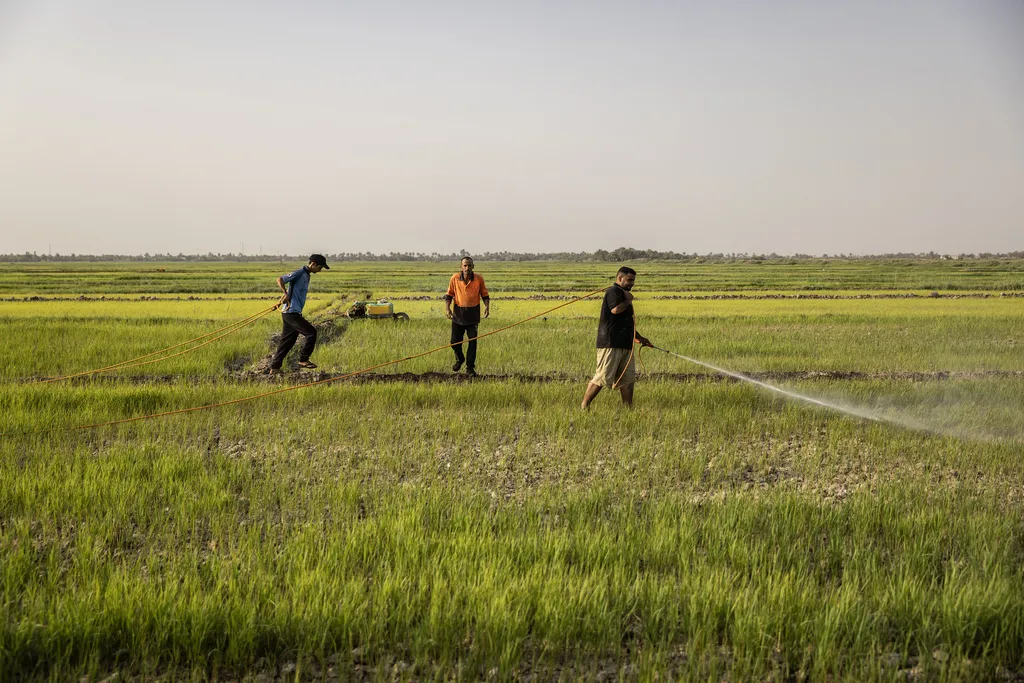In the arid landscapes of Iraq, where water scarcity and droughts pose significant challenges to agriculture, a groundbreaking study has emerged, offering a glimmer of hope for farmers and the energy sector alike. Published in the *Mesopotamia Journal of Agriculture* (translated from the Arabic name *Journal of Agriculture of Mesopotamia*), the research, led by Alvin Smucker from the Department of Plant, Soil and Microbial Sciences at Michigan State University, explores the transformative potential of Subsurface Water Retention Technology (SWRT) in cultivating sandy soils.
The study, conducted in the greenhouses of Najaf Province during the spring of 2015, focused on the impact of SWRT on irrigation water use efficiency (IWUE) and the yields of chili pepper crops. The experiments involved four treatments: SWRT, organic matter, tillage, and no-tillage farming, with irrigation scheduling based on soil moisture content. Soil sensors from Decagon Devices, USA, were employed to measure volumetric water content accurately.
The results were striking. The use of SWRT technology led to a significant reduction in irrigation water usage, saving 22% and 36% compared to organic matter treatment and tillage (control) and no-tillage treatments, respectively. This reduction in water usage translated into a substantial increase in water use efficiency, with SWRT showing a 78% and 89% improvement compared to the control and no-tillage treatments.
Moreover, the productivity of the agricultural unit improved with SWRT, enhancing the quality of the fruits. The pepper yield increased by 13%, 8%, and 20% compared to the tillage, organic matter, and no-tillage treatments, respectively. “The decrease in the amount of irrigation water added leads to an increase in water use efficiency in SWRT,” Smucker noted, highlighting the technology’s dual benefits of water conservation and enhanced productivity.
The implications of this research are far-reaching, particularly for the energy sector. As water scarcity becomes an increasingly pressing issue, the efficient use of water resources is crucial. SWRT offers a promising solution, not only for agriculture but also for the broader energy sector, where water is a vital resource for various processes. By reducing water usage in agriculture, SWRT can free up water resources for other critical needs, including energy production.
The study’s findings suggest that SWRT could play a pivotal role in shaping future agricultural practices, especially in arid regions. As Smucker explains, “The use of SWRT technology leads to saving significant amounts of irrigation water, which can be redirected to other essential uses.” This technology could revolutionize farming practices, making them more sustainable and resilient in the face of climate change and water scarcity.
In conclusion, the research published in the *Mesopotamia Journal of Agriculture* underscores the potential of SWRT to transform agriculture and contribute to water conservation efforts. As the world grapples with the challenges of water scarcity and drought, innovative technologies like SWRT offer a beacon of hope, paving the way for a more sustainable and efficient future. The study’s insights are not just academic; they hold practical, commercial implications that could resonate across industries, particularly in the energy sector, where water is a precious commodity.

